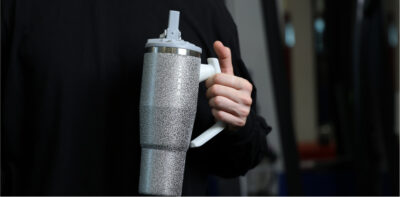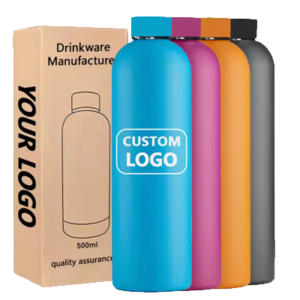Why does a insulated bottle sometimes make a rustling sound when shaking
Insulated bottles are essential daily-use items designed to keep beverages warm or cold, ensuring a comfortable drinking experience anytime, anywhere. The insulation performance of these bottles is achieved through their internal structure, particularly the insulation layer, which is typically a vacuum or an air layer filled with Aluminum foil. However, you may have noticed a rustling sound when shaking an empty insulated bottle—let’s explore why this happens.

Table of Contents
ToggleThe Internal Structure of an Insulated Bottle
The insulated bottle’s design comprises three primary layers:
- Inner Layer:
This layer, which directly holds the liquid, is typically made of stainless steel or glass, ensuring durability and safety for food-grade use. - Middle Layer (Insulation Layer):
This layer is critical for maintaining the temperature of the liquid. It often features a vacuum or an air layer, sometimes enhanced with insulation materials like copper or aluminum foil. These materials are included to reflect thermal radiation, significantly boosting the bottle’s thermal performance. - Outer Layer:
The outer layer protects the inner components and provides the bottle’s exterior design. It is commonly made from stainless steel, plastic, or other durable materials.
The double-wall stainless steel structure, combined with a vacuum insulation design, minimizes heat transfer through conduction or convection, ensuring beverages remain warm or cold for extended periods. The incorporation of copper or aluminum foil further improves the bottle’s thermal efficiency. These reflective layers bounce heat or cold radiation back into the liquid, sustaining the desired temperature for longer durations.
Why Does the Bottle Produce a Rustling Sound?
The rustling sound commonly heard when shaking an empty insulated bottle is typically caused by the copper or aluminum foil within the insulation layer. When the bottle is moved or shaken, the foils may vibrate slightly due to their positioning, creating the rustling noise. This is a normal phenomenon and does not impact the bottle’s insulation performance.
Other Possible Sounds and Their Causes
While rustling sounds are harmless, other noises inside an insulated bottle may indicate specific issues:
- Air Leakage or Dripping Sounds:
If there is water in the bottle and the lid is not sealed correctly, air or liquid movement may produce these noises. - Rattling or Loose Insulation:
A rattling sound could occur if the insulation layer has become loose or damaged. This may require inspection and potential repair to ensure optimal performance.
Proper Care and Maintenance
To maintain the performance and longevity of an insulated bottle, regular care is essential. Here are some tips:
- Check for Sealing Issues:
Ensure the bottle is tightly sealed to prevent air or liquid leaks. - Inspect the Insulation Layer:
If you notice unusual noises, examine whether the insulation layer is intact and properly secured. - Handle with Care:
Avoid dropping or subjecting the bottle to strong impacts, which could damage the insulation layer or reflective foils.
Understanding the internal structure and materials of an insulated water bottle allows users to make better use of it while ensuring an enhanced user experience. For manufacturers, this knowledge serves as a guide for producing high-performance, durable bottles that meet consumer expectations.


